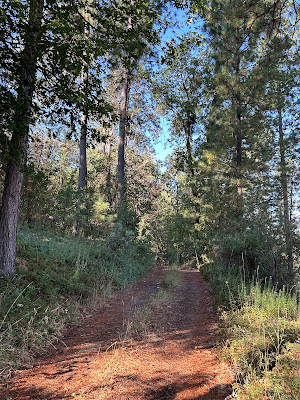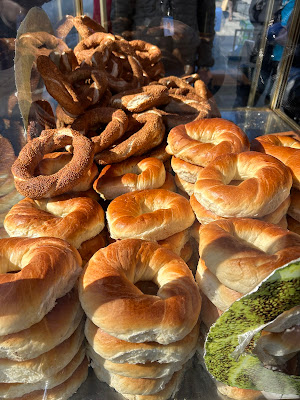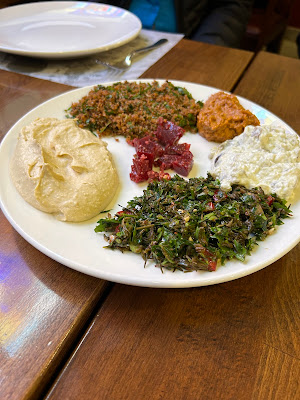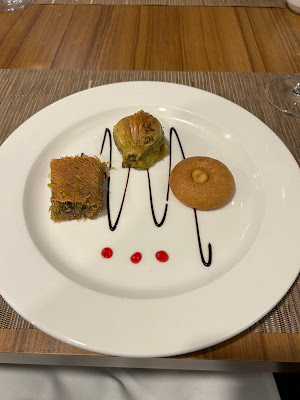Traveling to Turkey, I did not quite know what to expect in terms of food. I had somewhat hazy sorts of ideas based on my very rudimentary knowledge and a single Turkish restaurant in New Home: basically rice and meat.
Boy, was I pleasantly surprised.
 |
| Not in Turkey but on the plane over. Yay complimentary alcohol! |
Turkish cuisine is a delight. It shares a great many similarities with Greek cuisine - or as our guide noted, Mediterranean cuisine. Below is a sampling of our foods in Istanbul.
From our first night in Turkey. The main dish is called manti. They are small stuffed dumplings similar to ravioli. Traditionally they are stuffed with lamb but beef is also used. To the right you can see dipping sauce including a yogurt based sauce. Bread is to the left (some sort of bread was with almost every meal). To the front is hot tea (which we will get to tomorrow).
The rings are simit, a bread roll similar to a bagel. They are rolled in sesame seeds. This was from a street vendor.
As part of our pre-tour time, The Ravishing Mrs. TB signed us up for a food tour. These foods were from the area around the Spice Market: simit, cured meat (not pork though; only made that error once in conversation), humus, cheese, and olives. The small red lump on the right is shakshuka which primarily consists of eggs and a tomato sauce. This is very traditional food and we saw it at virtually every hotel we were at.
One of the stops we made on the tour was at a very highly rated restaurant which had a rotating menu of regional Turkish dishes. No recollection of what any of these were called - but the green dish up front had unripe almonds as an ingredient.
Bellow is lavas, a Turkish bread. Quite thin and crispy, it comes to the table puffed up but deflates - especially if you tear off a hunk!
Below is perhaps one of the most unusual meals we had in Turkey: kokoreç, which is lamb or sheep intestines rinsed (perhaps obviously), stuffed with sweetbreads, and grilled over charcoal. Ours, as you can see, was put into grilled bread. It did not have an overpowering taste but was a bit on the fatty side - but quite delicious none the less. The white foamy liquid is ayran, a drink made by adding water and salt to yogurt. It is served cold and traditionally in a traditional style cup. Quite popular in Turkey, I did not really seek it out.
Baklava: Not just a Greek dessert, it was available almost every night of our trip. The ones below were from a shop that has sold only baklava since 1956. Unusual fact: there are many different kinds. The only in front is called Angel's Hair; the one behind it is (I believe) has pistachio.
Gryos on the street outside the Hippodrome. Somehow as in Greece, french fries are a regular "thing".
The second night we were there we had dinner at a literal hole-in-wall down from our hotel. They spoke no English and we no Turkish but we had a fine meal just the same. Out of the goodness of their hearts they brought us a round of starters. The balls on the left are mercimek köftesi, or lentil meatballs. Made with red lentils, bulgur, and spices, they were an excellent vegetarian option and commonly available at all of the places we stopped.
Fairly traditional Turkish meal: bread, meat, rice, and a variety of vegetables.
And, of course, baklava.
A lunch: lamb prepared in tomatoes and vegetables with a hefty side of yogurt.
Oh look - more baklava.
Dinner starters: vegetables, humus, cheese, and mercimek köftesi.
Firenda kimali makarna: A pasta dish with layers of pasta, seasoned meat, and vegetables covered with shredded cheese and eggs. Essentially Turkish lasagna.
Dessert. What a surprise - more
baklava and a honey cookie.
Turkey: Come for the history, stay for the food.

















































